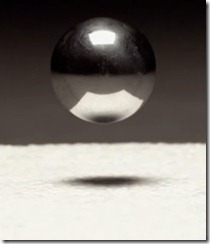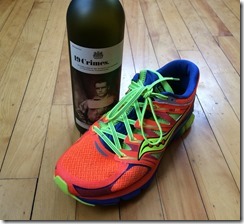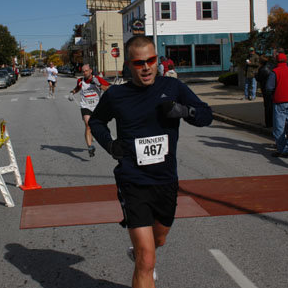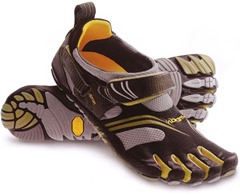 A bit over a week ago adidas introduced their new Boost midsole technology. Based on mechanical testing, Boost is touted as providing the best energy return of any cushioning material currently incorporated into a running shoe. This finding was confirmed by Runner’s World Magazine, who put the shoe to the test in their shoe lab and found the cushioning material to indeed be a cut above the rest when it comes to energy return.
A bit over a week ago adidas introduced their new Boost midsole technology. Based on mechanical testing, Boost is touted as providing the best energy return of any cushioning material currently incorporated into a running shoe. This finding was confirmed by Runner’s World Magazine, who put the shoe to the test in their shoe lab and found the cushioning material to indeed be a cut above the rest when it comes to energy return.
After the Boost introduction, I wrote a post in which I criticized the marketing approach taken by adidas, pointing out that how a material behaves in mechanical testing may not be the same as how it behaves on the human foot. I received a bunch of responses to that post, many via private email, and the vast majority came from people agreeing with what I wrote. One of those emails came from Amby Burfoot, who has watched shoes evolve (or devolve depending on your perspective) for over 40 years. Amby and I share an interest in the science of running, and we exchange emails frequently on topics such as this (and as revealed in his article, we also apparently share a fear of our wives’ reactions to excessive running shoe purchases). It turns out that he shared my skepticism about whether Boost would actually work as well on a runner as it apparently does for a metal ball.
Amby mentioned to me that he had made some inquiries about Boost, and that he was writing an article on the shoe for his Peak Performance Blog on RunnersWorld.com. That article was published today, and it is a terrific piece of work.
Amby writes about how Runner’s World confirmed the mechanical testing results that adidas has been touting, but he’s also not buying that this is necessarily a reason to go out and spend $150 on the shoes. He writes that the ball-drop test is “… a machine and materials test, not a test of runners who are running.” He quotes from the ASTM (American Society for Testing and Materials) which states that “Shock attenuating values determined by this test method, for materials systems of athletic footwear, may not correlate with similar values experienced by a runner’s heel or foot.” He discusses bimoechanist Benno Nigg’s views on the criteria that must be met for energy return from a shoe to have value to a runner. He really covers quite a bit of ground.
Perhaps most interestingly, Amby did some probing regarding whether adidas did any physiological testing to look at whether Boost benefits running economy and found the following:
“Most exercise physiologists believe that increased energy return has meaning only if it decreases the amount of oxygen you use while running. Adidas has apparently conducted such a test and found that the boost midsole lowers oxygen consumption by about 1 percent compared to a same-weight EVA midsole shoe. That’s a modest amount, subject to confirmation, variable among different users, and not a strong reason for wearing a running shoe unless you are aiming for the world record.”
As far as I know that data has not been published, so details regarding the testing are lacking. Was the difference statistically significant? Not sure. Did individual responses vary (e.g., by gender, body weight, running style, etc.)? No idea. What was the weight of the shoes? Don’t know. The latter point is important because if the shoe was the Energy Boost model which is reported at about 9-10oz, then simply wearing a lighter shoe that doesn’t cost $150 would seem to accomplish the same benefit. We know from existing research that we gain about 1% in economy from every three or so ounces we drop in shoe weight, so a six ounce flat might provide the same benefit. One could argue that the benefit of Boost is that you get the same economy benefit as a lighter shoe but with greater cushioning and durability, which may in fact be true, but then we get into the question of how the midsole affects running form and the forces applied to the legs and feet.
Amby finishes his article with some great advice:
“When you try out the Adidas Energy Boost, don’t imagine that you’ll bounce effortlessly off the road or run as fast as Haile Gebrselassie. Instead, run in the store or on the nearby sidewalk and ask yourself: Does this shoe feel like a natural extension of my body? Does it feel like it was almost custom-designed for my feet? Does it give me a smooth, crisp “ride” when I run in it?”
In other words, don’t buy because of the marketing. Buy based on how a shoe feels on your feet. Try it on and run in it. Does it disappear, does it work with your stride, or do you feel like you fight the shoe with every step? These are the tests we runners need to apply.
And if you happen to have a portable oxygen monitoring system handy, the real testing can begin :)
You can read Amby Burfoot’s full article on adidas Boost here.


















I think you’re being a little too dismissive of the mechanical tests. I agree that, in general, mechanical testing might not correlate perfectly with increased performance. However, because there are so many additional variables that are introduced when you switch over to physiological testing, it’s going to be difficult to get any sort of significant, meaningful data.
I’m sure that shock attenuation is not the only important material property to test (e.g. does the contact time increase in boost shoes? springs have great shock attenuation, but each step would take 5 seconds), but I think in the long run I’d choose to compare shoes based on several different materials properties (whose results would be much more reliable) rather than seeing a percent or 2 difference in oxygen consumption in humans.
But this is from a materials scientist’s perspective, so I’m a bit biased.
Mechanical testing has it’s place, but from a marketing standpoint you need more than that if the underlying pitch is that a shoe will improve your performance.
—-
Pete Larson’s Web Links:
-My book: Tread Lightly: link to ow.ly
-Blog: https://runblogger.com
-Twitter: link to twitter.com
-Facebook Page: link to facebook.com…
-Discussion Forum: https://runblogger.com/forum
In general, I tend to be a skeptic of any system/substance that seems to ‘do the work’ for you. To me, running is more than elevating your hear rate for the purpose of fitness, which is seems like Boost doing, and for me, equipment should be, as Amby put it, an extension of the body and not a quasi-treadmill that you wear.
I have the same kind of feeling about Puma’s Mobium technology as well. It’s basically replicating the function of the plantar fascia IMO – do you think this is the new trend coming along? Equipment that more and more actually doing the work for you instead of with you?
Shoe companies always need a new angle for marketing purposes, but they also have an interest in improving design to stay ahead of competitors. If Boost does work, it would be a boon for adidas, as would Mobium for Puma. But that’s what gets me – you could make a much bigger splash if you could link up the mechanical testing to a performance benefit. Close the loop so to speak.
—-
Pete Larson’s Web Links:
-My book: Tread Lightly: link to ow.ly
-Blog: https://runblogger.com
-Twitter: link to twitter.com
-Facebook Page: link to facebook.com…
-Discussion Forum: https://runblogger.com/forum
Do you think that’s possible? It seems that mechanical testing is so much more easily controlled from a variable standpoint versus getting a legit sample size of runners able to be tested under the same conditions?
It is possible, but it takes time, and time is the problem. Shoe companies ave production cycles that don’t necessarily mesh with the scientific publishing timelines. They may not want to wait for the data. And that’s a problem. The alternative is to be more transparent in marketing products and avoid potentially deceptive marketing.
Ryan, it’s always been a trend, since Nike started in with Air shoes back in 1970’s. All kinds of goofy things have been tried, many adding weight to shoes. Even things like Mizuno’s Wave plates are trying to demonstrate some kind of advantage beyond the bare foot. The big innovation of late ,and a significant one that has given my old legs less pain, is lighter and lower drop shoes. Interestingly not only lighter materials but a lower drop means less material in the heel so lighter shoes. Uppers are getting lighter and now it is time for some more innovation in the midsole/outsole: Boost, Newton, On, even Hokas
This debate will continue until runners actually try the Boost. I agree it’s how it feels first and foremost. The marketing is the marketing and the ball test is trying to make a point in a simple fashion, to sell shoes to lots of people. Is the bounce a valid indicator of a runner’s energy return? who knows till we try them and real testing is done. What is interesting is that this is a new midsole material with very promising properties. In addition to the bounce effect the consistent cushion over a wide temperature range is very interesting. has anyone looked at the effect of temperature, especially colder temperatures on shoes and performance, those “brick” midsoles on a cold day. Apart from Newton, trying to do a similar rebound effect by loading the lugs into the midsole then releasing or ON with their crushable lugs which spring back most everything else is more or less the same EVA and different geometries of midsole (stack height, drop, rockers, etc…). Lest we forget what has happened in use of new materials and processes above the midsole in just the last few years. These days hardly any decent shoe have stitched uppers, all welded overlays or no overlays at all Flyknit. Lighter less constricting shoes the result. Innovation is good and the Boost midsole appears to me innovative, due to the RW tests, if over hyped. I am getting a pair and will let you know. Now give me a Boost Adios or something with lower drop and I will be really psyched
I should have a pair coming as well, interested to try it. I agree that innovation is good and am completely open to the possibility that Boost is a game change, but the scientist in me demands evidence to back the marketing.
—-
Pete Larson’s Web Links:
-My book: Tread Lightly: link to ow.ly
-Blog: https://runblogger.com
-Twitter: link to twitter.com
-Facebook Page: link to facebook.com…
-Discussion Forum: https://runblogger.com/forum
You’re right, and at the same time I’m kind of snobby. I sit and declare shennanigans on Adidas knowing full well that if I had a pair in front of me, I’d put them on and do my 50 miles in them.
At the same time, marketing of any kind has a tendency to over-promise and under-deliver in virtually every sphere they’re in. So I guess whatever gets you out on the road, placebo/mechanically tested/etc, gets you out on the road, right?
“I sit and declare shennanigans on Adidas knowing full well that if I had a pair in front of me, I’d put them on and do my 50 miles in them.” <— I resemble this statement :)
—-
Pete Larson’s Web Links:
-My book: Tread Lightly: link to ow.ly
-Blog: https://runblogger.com
-Twitter: link to twitter.com
-Facebook Page: link to facebook.com…
-Discussion Forum: https://runblogger.com/forum
Usually the reality is not as great as the hype, for sure. About the only company that has pretty consistently done better than hype is Apple, but then again there was no hype ahead of anything they do. If it is a promising new material, which it appears to me to be there will be iterations, a la Microsoft. I find it ironic that I am trying something from Adidas. Except for Adidas Rockets they sent me I haven’t run in any of their stuff for many years. Their trainers were always charitably put: “firm” and then some.
Boost Adios is on the way for Fall 2013.
Fudge, I posted a comment, and disqust ate it.
The point was, if you want a steel ball to bounce real high, bounce it off concrete. If you want maximum energy return to your feet when you’re running, take off your adidas Boost and run barefoot on concrete. Adding energy-absorbing layers under your feet reduces performance, does not increase it (unless you compare it to something worse).
Hi Pete – thanks for the update.Do you think the boost could help with micro-vibrations? I have 2 herniated disks in my lower back, so have stopped running and am doing physical therapy and unfortunately taking daily pain meds. Three out of four doctors I’ve seen have said I’ll need to stop running for good because so-called micro-vibrations will hurt my back more. Can’t seem to find too much about this from the little googling I did. Is this a real concern? and if so, anything I could do to mitigate it, whether something like this shoe or anything else?
(FYI, until I got hurt I used to run 4-5 times a week, most recently using Adidas micoach app as a training tool. Haven’t run any races longer than 16K in the last decade, though did run 3 marathons in my younger days). thanks!
Have you tried Hokas? Even just for walking? Seems like many with serious run stopping problems have had some success with them. As far as Boost will let Pete answer.
Haven’t tried Boost yet so don’t know. Should have a pair soon. Vibrations are very real, google muscle tuning and you may find some info about it. I think with lower back issues you want to attempt to attenuate shock as much as possible before it reaches the level of the lower back. A shoe with good shock absorbing qualities is one option, stride modification is another. Short strides with a forefoot strike might help in this case. As Sam suggests, something like the Hokas could also be worth a shot.
Sent from my iPad
Hi- thanks for the replies! I had been working on shorter stride and less heel impact already (though to be honest I have a very hard time telling when I’m heel-striking and when I hit mid-foot ). Will definitely look into both stride adjustment and Hokas. Thanks!
There needs to be a a lab that can test the shoes in a way more like the way real running works. For example, a machine that simulates a stride and landing, measures the forces on the landing, and the exact amount of energy (wattage) it takes for the next stride. That way you could see if the energy returned by the shoe is more or less than other shoes.
It intrigues me because when you look at something like the Air-Trekker, it does seem that it returns more energy and let’s people run faster because of it. So, while that’s an extreme end of the spectrum, maybe there is a little bit of that principle in the Boost.
This is the Air-Trekker: link to amazon.com…
Why so many blogs posts about such a trivial advance? I know it’s the overblown marketing that is the key problem. I 1% improvement in economy is interesting but pretty small, as you say a lighter shoe can do then same. Also the study about the effect of getting used to running in Vibrams showed a larger improvement than 1% too, so again one can view how feeble the Boost is compared to other things you can do to improve efficiency.
Of course Addidas could create a minimal light weight shoe using their new mid-sole and provide all the benefits of better form, lighter weight and more efficiency mid-sole, and perhaps one day they will get serious about creating an efficient shoe than spending the majority their budget on over hyped marketing.
To get a perspective on how dumb arse all this hype about running shoe innovation is go have a look at this article on quadrocopters juggling a upturned pendulum:
link to robohub.org…
Now that is clever and inventive. Kudos points from a fellow engineer 10, Kudos points for Addis Boost mid-sole 1. It’s just not even in the same ballpark, it’s a tiddly little improvement, and absolutely not any sort of game changer and really doesn’t deserve so much attention.
Why so many posts? It’s all about the marketing and the intersection with science. I’m a running nerd and this kind of thing gets me going :)
—-
Pete Larson’s Web Links:
-My book: Tread Lightly: link to ow.ly
-Blog: https://runblogger.com
-Twitter: link to twitter.com
-Facebook Page: link to facebook.com…
-Discussion Forum: https://runblogger.com/forum
That’s a lot of debate based on a shoe not yet worn. I don’t quite understand the hatred. Either it’s real and it’s good, or the market will reject it AFTER trying it on. What’s the point of posting speculation about what a new material may or may not bring to the table? Was the same conservative views opposing EVA when it was first introduced? Should new material research be halted because we already have all the answers? I guess I am just confused.
My problem is not the material or the shoe. It’s the marketing.
Sent from my iPad
The market has to pay $150 to try the shoe. They should be able to do so with good information about the benefits of the shoe. Way to many marketing claims that don’t pan out these days.
Sent from my iPad
The concept of waiting for the market to accept or reject after purchase and use is flawed…..marketing, the placebo effect, and the ingrained need humans have to justify purchases is too strong to overcome a negligible increase in efficiency. Tell someone this sugar pill will make them feel better, and they will be surprisingly healthy after taking it. I can imagine that it ‘might’ have more energy return than EVA, but is it at a cost of shock attenuation? I know when I bounce on a trampoline, my back hurts. When I do box jumps without shoes, it does not.
I got to try these on in the local running store today. Didn’t get to run outside, just walked around the store a bit. Newbie impressions: they’re quite comfy, pretty minimal upper (at least compared to what I’m used to). Rep claimed 500+ miles by wear testers. Versions with some medial support coming in August.
I don’t really understand the part of this article that dismisses a 1% increase in economy as being only for those attempting a world record. Now, I appreciate marketing mumbo-jumbo and all that and so I agree we should be sceptical about the claim but that doesn’t seem to be what’s happening here. The article suggests the claim, even if true, isn’t worth investing in shoes over. If the claim is in fact true, and these shoes do magically offer a 1% increase in running economy over similar shoes then that’s pretty great but the general tone of the article seems to be a 1% increase isn’t anything to even consider. Don’t know about you guys but I’d take anything that improves running economy. Nobody will expect a shoe to come out that suddenly gives you a 10% boost? So, yeah, take the claims with a pinch of salt but don’t dismiss it out of hand because the percentage gain is seemingly pretty small.